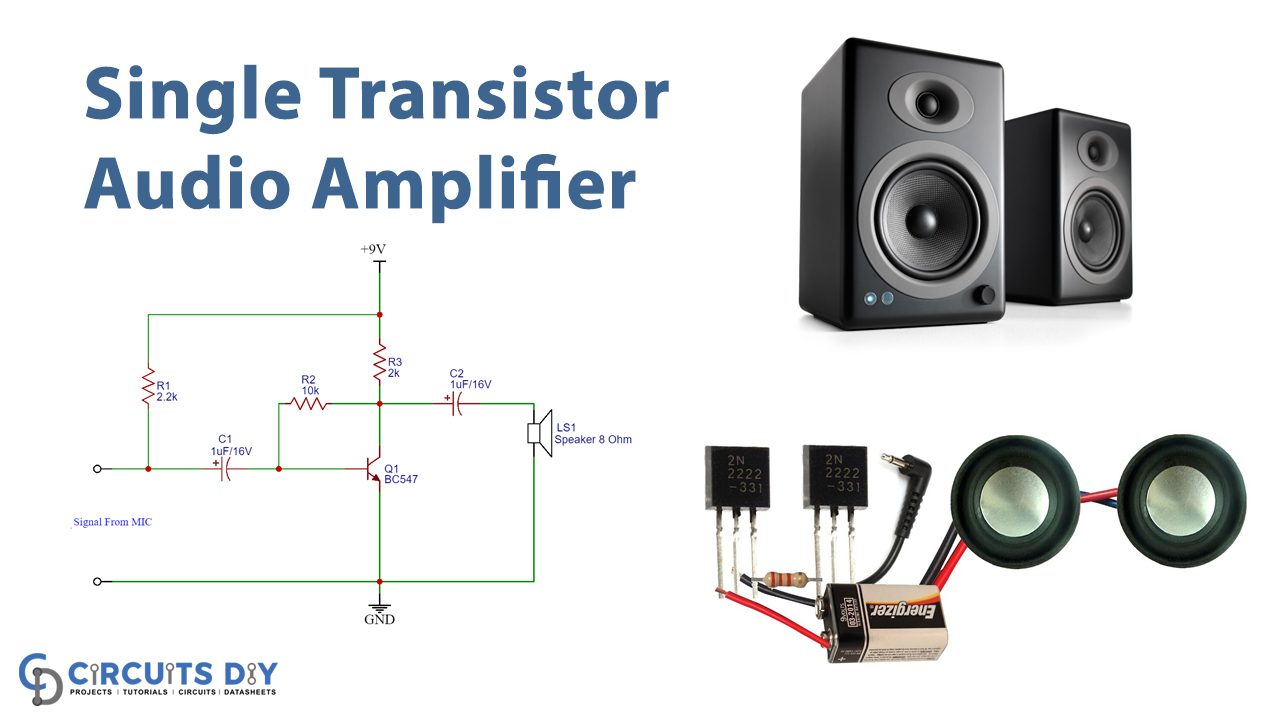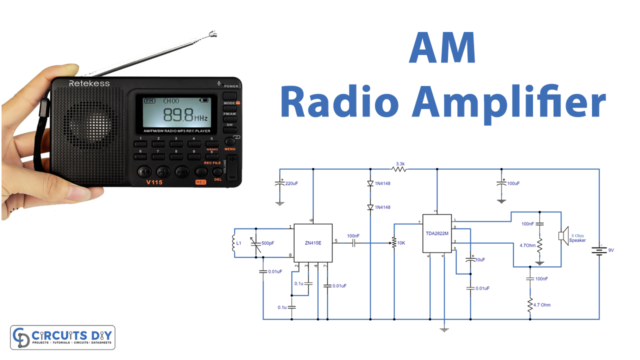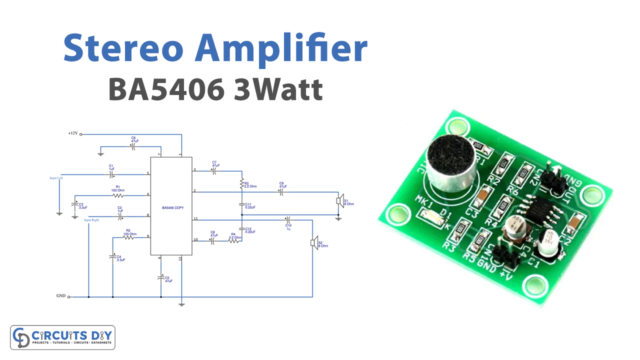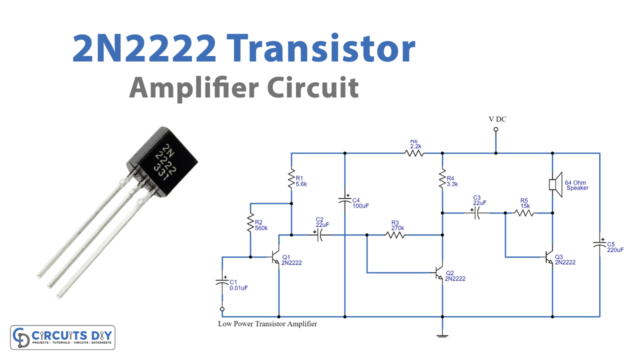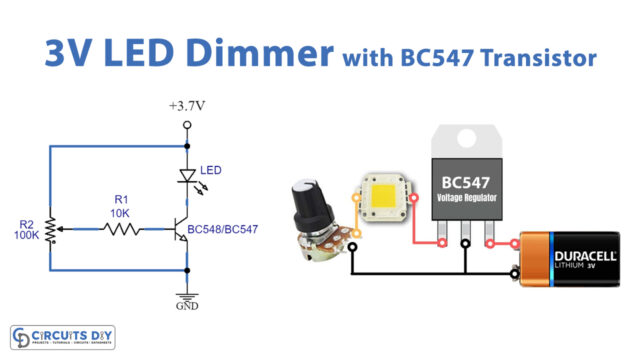Introduction:
A device that provides strength to any signal be it power, voltage, or current is called an amplifier. It amplifies the weak signal to make it useful by increasing its power, or it amplifies the signal to be used in sound systems or loudspeakers thus amplifiers can be categorized as power amplifiers or weak-signal amplifiers.
An audio amplifier which is a power amplifier is one of the types of amplifiers that amplifies the low-power electronic audio signal like the signal from any musical instrument or a radio receiver and strengthens that signal to a level that is strong enough to drive loudspeakers or headphones.
In this article, we will discuss a simple and easy-build circuit of an audio amplifier and a pre-amplifier circuit using a few components. The main component of the circuit is an NPN transistor BC547. A detailed explanation is given below.
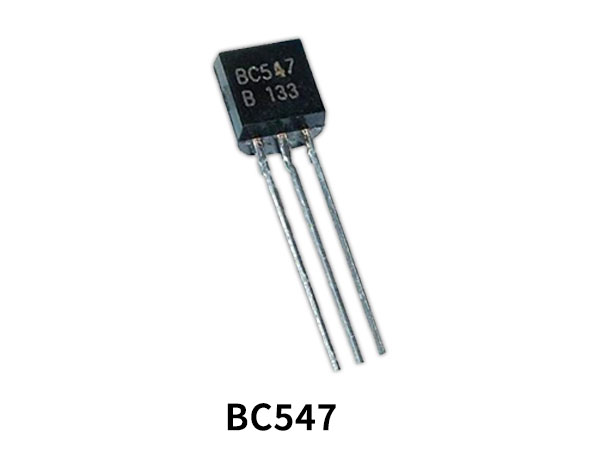
Hardware Components
The following components are required to make Audio Amplifier Circuit
| S.no | Component | Value | Qty |
|---|---|---|---|
| 1. | Transistor | BC547 | 2 |
| 2. | Resistor | 2KΩ, 2.2KΩ, 10KΩ | 1 |
| 3. | Electrolytic Capacitor | 1µF/16V, 47µF/16V | 2,1 |
| 4. | Loud Speaker | – | 1 |
| 5. | Battery | 9V | 1 |
BC547 Pinout
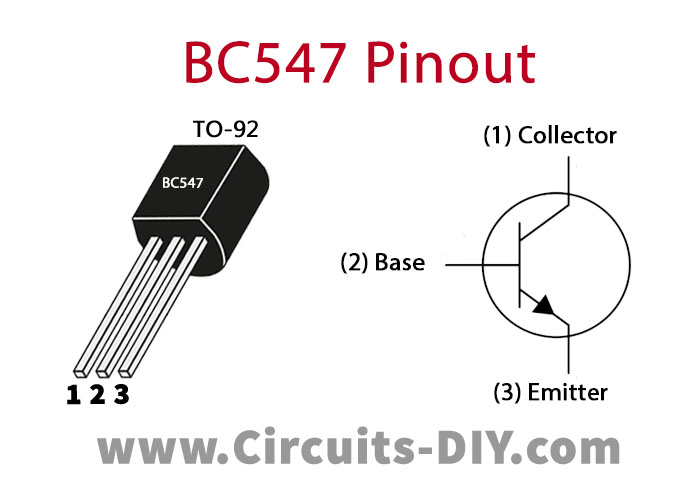
For a detailed description of pinout, dimension features, and specifications download the datasheet of BC547
Audio Amplifier Circuit


Working Explanation
The pre-amplifier circuit is basically used to amplify the small audio signal to a certain level which is then applied to the power amplifier which amplifies the signal to drive a loudspeaker.
Here both the circuits use transistor BC547 for the amplification of the sound signal. The signal from a mic is applied to the pre-amplifier circuit to remove the noise and distortion from the signal and amplify it. The resistor is connected between the input and VCC terminal to boost up the audio signal while the capacitor connected filters out the noise and the coupling signal is provided to the base of the transistor. The resistor is connected which acts as a coupling resistor for the collector where the output signal is received which is fed to the loudspeaker through a capacitor. Through biasing the transistor above its cutoff value, the output signal received is not phase-shifted.
The input signal is fed to the base of the transistor in the amplifier circuit through a capacitor and the resistor is connected and coupled with the collector. The transistor is biased above the cutoff voltage which is persistently present at the base of the transistor hence amplifying the signal at the output.
Applications:
The applications of audio amplifiers include:
- Instrument amplifiers are used in different musical instruments.
- Public address system
- Cinema theatres or concert sound systems.
Hence, there are many real-world applications of audio amplifiers.


